The 1963 American Mount Everest Expedition (AMEE) Risked Everything and Paid a High Price for Success
By Matt Niswonger • Photos by Barry Corbet
On February 22nd, the American Alpine Club will host a weekend in the San Francisco Bay Area to celebrate the 50th anniversary of the first American expedition to successfully climb Mount Everest. The weekend will be made possible by Eddie Bauer, an AMEE original sponsor.
As the American Alpine Club convenes to mark the golden anniversary of the AMEE’s climb, members and guests will reflect on this historical achievement during a weekend of scheduled events. Honored members will include expedition members James Whittaker and Tom Hornbein, now in their eighties; as well as expedition leader Norman Dyhrenfurth, now in his mid-nineties.
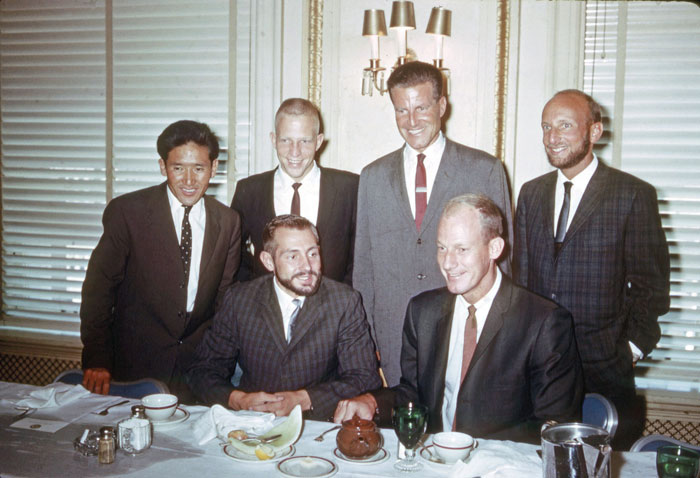
Summiting Everest in 1963 is considered the most successful full-scale American Himalayan expedition, as well as a significant footnote in the world history of climbing. The expedition not only put the first American and a Sherpa on top of Everest via the South Col route, it also pioneered the daring West Ridge route, thus completing the first traverse of the tallest mountain in the world. Adding to the success, two more Americans summited via the South Col. This was no small feat, for at the time the only nations with a credible resume on Everest were Great Britain and Switzerland.
It would not be an exaggeration to say that Americans viewed the climb as a prelude to the Space Program, for at the time the summit of Everest was shrouded in danger and mystery. In 1963 it was widely thought that without supplementary oxygen, humans would quickly become unconscious and die while exerting themselves above 26,000 feet.
In fact, before 1963 there were more deaths (at least ten) on Mount Everest than summits of the mountain (six). President Kennedy himself, who famously challenged Americans to put a man on the moon within the decade, presented the victorious AMEE with the prestigious National Geographic Hubbard award in a Rose Garden ceremony on July 8, just four months before he was assassinated.
Attendees of the AAC’s annual benefit dinner will be more than eager to hear what the surviving members of AMEE have to say. Certainly these gentlemen will choose their words carefully, for although they returned home national heroes, the campaign was brutal and even tragic. After all, in the context of 1963 we are talking about one of the most dangerous group endeavors in the world. In the words of Barry Bishop, the AMEE member and National Geographic photographer who barely survived the summit, “When the battle ends, the mountain remains unvanquished. There are no true victors, only survivors.”
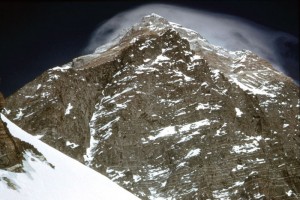
Other veterans of the mountain, including George Mallory, who famously died on Everest in 1924, have echoed these words,
“Have we vanquished an enemy? None but ourselves.”
While it is true that the Dyhrenfurth-led 1963 AMEE was received with celebration and acclaim, all of the climbers felt blessed by their fortunate survival and were humbled by the challenge. In James Ullman’s official account of the ascent, Americans on Everest, an over-arching theme was the sheer magnitude and danger of the effort. Modern mountaineers have compared climbing Everest to war, and this analogy certainly rings true in James Ullman’s account from 1963.
A day of reckoning came for everyone six weeks into the expedition. On that day, climber John “Jake” Breitenbach was killed instantly when a massive ice block crushed him in the Khumbu Icefall. This tragic accident also crushed expedition morale, which was just gaining momentum after weeks of tedious and exhausting trekking and load carrying from Kathmandu.

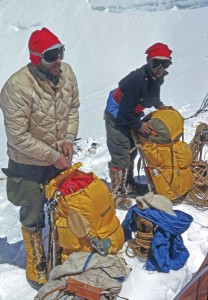
In the wake of Jake’s death, the entire group spent a few days in the throes of existential angst. In his book Everest: The West Ridge, Hornbein addressed the matter with honesty (p78), “The first shock [of Jake’s death] brought forth the question: If this is mountaineering, is it worth it?”
However, after much struggling with such rhetorical questions, Hornbein chose to move on,
“Therefore, one cannot regret being there when a death occurs, as it occasionally must. One must go on, thankful for being spared—or quit.”
All of the climbers must have considered the likelihood of dying as they planned for the expedition; however, there is no preparation for the reality of death and Hornbein’s contemplation illustrates this truth. At the same time, successful Everest climbers must use callous sentiment as a necessary defense mechanism against their own fears in order to persevere. It is safe to say that the ability to compartmentalize hardship and tragedy is a prerequisite for success in the so-called “savage arena.”
Everest: The West Ridge is exciting to read, despite being nearly fifty years old. Hornbein’s personality jumps off the pages as the reader moves through this first-hand account of a mountaineering equivalent to putting a man on the moon. Not only was Hornbein one of the driving forces behind the West Ridge ascent, he also pioneered oxygen technology for mountain climbers, and went on to become a leader in the field of medical anesthesiology.
In reading the three primary accounts of the AMEE—the two books already mentioned, as well as the AAC official expedition account by team leader Norman Dyhrenfurth—one is impressed by the level of teamwork and selflessness that characterized the expedition.
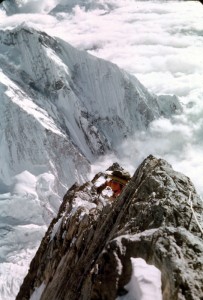
All three accounts are filled with examples of painstaking efforts to let every man have his say in just about every important matter. This includes everything from the decision to continue after Jake’s death, to how much time, energy, and manpower to devote to the highly uncertain and dangerous West Ridge climb as opposed to just throwing everything at the easier South Col route. At all turns the group was painstakingly democratic in making decisions—to the point of frustration for some.
In this way, the effort was very “American,” and the resulting team unity contrasted sharply with other famous European expeditions.
Commitment to consensus may have seemed laborious at times, but in the end, it contributed greatly to the morale of the team. Credit for this surely must be given to AMEE leader Norman Dhyrenfurth, who was by all accounts a huge asset to the team. History has shown that the right leader is essential for successful expeditions on Everest. Dyhrenfurth was mentored by none other than Sir John Hunt, the man whose legendary 1953 expedition put Edmund Hillary and Tensing Norgay on top of the world.
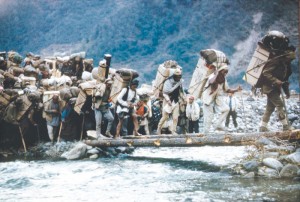
While Hunt has gone down in history as possibly the greatest expedition leader in the history of mountaineering, Dyrhenfurth deserves honorable mention as well. For in the ranks of the AMEE there existed a rare harmony among the team, and a sense from everyone, including Sherpas, of absolute respect, faith, and trust in the “Bara Sahib,” as the Sherpas called Dhyrenfurth. Such harmony has always been the exception, not the rule.
Beyond having extraordinary leadership and driven climbers, the AMEE was blessed with some of the strongest mountain athletes America had to offer in the early 1960s. “Big” Jim Whittaker, who made it to the top first, was probably the strongest climber on the mountain with over 50 ascents of Mt. Rainier, and an impressive record on Denali to his credit.
No one was surprised that Jim Whittaker reached the top with Gombu before any other American, forever cementing his place in mountaineering history. As the very first employee of a little known outdoor store in Seattle called REI, he was another example of a driven expedition member who went on to great success after the AMEE. In time he became the CEO of REI and helped shape it into one of the most influential brands in the outdoor industry.
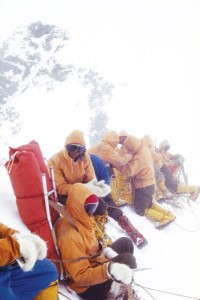
Another fascinating member of the expedition was Hornbein’s partner on the West Ridge, William “Willi” Unsoeld. An almost superhuman climber with a risk taking personality, Unsoeld was one of the founding fathers of both the Peace Corps and Outward Bound. Sadly, he was killed in an avalanche in 1979 while leading a group of students on the stormy flanks of Mount Rainier. In his honor, members of the Unsoeld family will be in attendance at the Alpine Club dinner.
Barry Bishop not only took some of the most memorable Everest photographs during his summit climb, but Lute Jerstad, climbing with him, took the first moving pictures from the summit of Everest.
It is safe to say that the AMEE wrote one of the most fascinating chapters in American climbing history. When the American Alpine Club meets near San Francisco on February 22nd and 23rd, members and guests will be celebrating the combined efforts of 19 Americans, 37 climbing Sherpas, and over 900 porters. These efforts resulted in significant achievements and touched many lives. It is certain that there will be many heartfelt toasts and warm reunions honoring the men who tested themselves on the cruel slopes of Mount Everest in 1963. As we look to the future, their legacy will be remembered for generations to come.
To purchase tickets to the American Alpine Club’s 2013 benefit dinner, and to help celebrate the fiftieth anniversary of the 1963 American Mount Everest Expedition, call (303) 384 0110 or go to americanalpineclub.org/everest.
———————————————————————————————————————————————————————————————————————————————————-
All photos provided courtesy of the Henry S. Hall Jr. American Alpine Club Library. Additional image galleries available at wwww.explore.americanalpineclub.org. ASJ would like to thank archivist Elizabeth Surles for her help with this article.

















[…] more about the expedition in our recent article Fortune Favors the Bold — Matt Niswonger Tagged as: American Alpine Club, Americans on Everest, everest, Jim […]